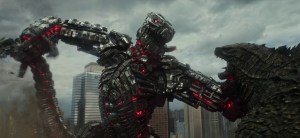A US Expert has solved the Loch Ness Monster mystery. Professor Henry Bauer has been chasing this particular story for a long time. The former Virginia Polytechnic Institute and State University faculty explained to The Daily Record that he thinks Nessie is an ancient species of sea turtle. Conventional theories have thought about the monster as a sort of dinosaur. Bauer completely refutes these ideas in favor of the idea that the Loch Ness Monster is actually a turtle trapped in the Loch because of changing landscapes. In other walks of life, scientists have noted when animals end up in weird regions because of environmental factors. For example, fish that tend to live in oceans ending up in nearby lakes because the water connecting the two dried up. A similar idea would apply for the legend as the waters the turtle swam through went away at the tail end of the last ice age.
Videos by ComicBook.com
“The most popular idea is that the Loch Ness Monster has a relationship to extinct plesiosaurs,” he observed. “But this is difficult to square with the rarity of surface sightings, let alone occasional sightings on land… On the other hand, everything described for the Loch Ness Monster squares with is known many living and extinct species of turtles… They’re air-breathing but spend very long periods in deep water. They venture onto land, are very fast in water, have the ability to be active in very cold water and have relatively long necks.”
In an effort to grapple with the findings of the man who started this whole legend, Bauer has been careful to show respect, while still disagreeing in moments. When the rubber hits the road, there’s just not enough concrete evidence to go with the idea that Nessie is a large eel-like creature.
“Tim Dinsdale’s film taken in 1960 is the conclusive proof, but there are also innumerable contacts by sonar, some excellent underwater photographs, and a few plausible surface photographs.” Bauer added. “I became seriously interested after seeing Dinsdale’s film, and 26 years later was an observer at Loch Ness during Operation Deep Scan, when a whole fleet of boats made a sonar search for Nessie. Everything points to creatures that spend most of their time in the deepest parts of the Loch. None of the evidence supports the idea that these are monstrously large eels.”
Do you buy this explanation for the Loch Ness Monster? Let us know down in the comments!









